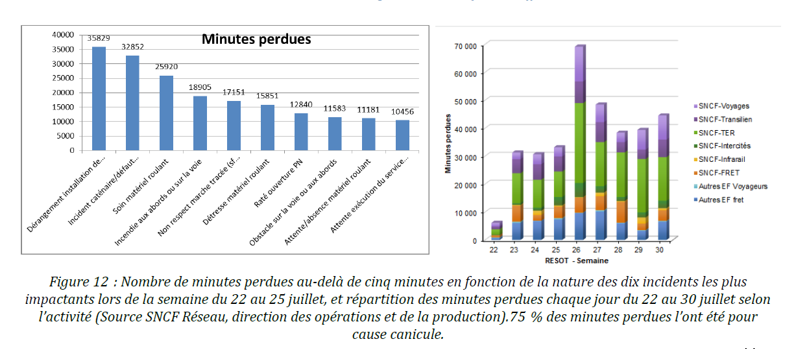💡 Adapting transport systems to climate change
💡 Adapting transport systems to climate change
by Lesley Brown & Joëlle Touré
Paris, 9 November 2021: this work session, organised by Futura-Mobility, provided an opporunity for participants to better understand the impacts of climate change on transport infrastructure, veritable lifelines for our society.
Taking the temperature
Climate change is underway. Frédéric Long, climatologist at Météo France, explained how in France there has been a significant increase in average temperatures that has accelerated since the 1980s. Also, although there is little change in the total cumulative annual rainfall, extreme events are more intense and droughts happening more often.
Globally, Mr Long confirmed the planet is already a little over one degree compared to the pre-industrial era and that “this increase in temperature is having consequences we can already see with our own eyes, for instance, the loss of glacier and sea ice mass in the Arctic.” Indeed the latter has already lost 40% of its surface area since the 1980s when measured in September, the time of year when the l’extension of this sea ice tends to be minimal. Other consequences, a 20cm rise in average sea levels since 1901; more frequent and more intense extreme events, in many regions of Western Europe, for instance; as well as more frequent droughts.
Where are all these changes leading? In its 6th report on climate change, released in August 2021, the Intergovernmental Panel on Climate Change (IPCC) explores five scenarios for greenhouse gas emissions between now and 2100. “Whatever the emissions scenario, we can already predict the climate up to 2040-2050,” explained Frédéric Long. “It’s from 2050 that these scenarios will start impacting pretty hard on warming over the years to come.”
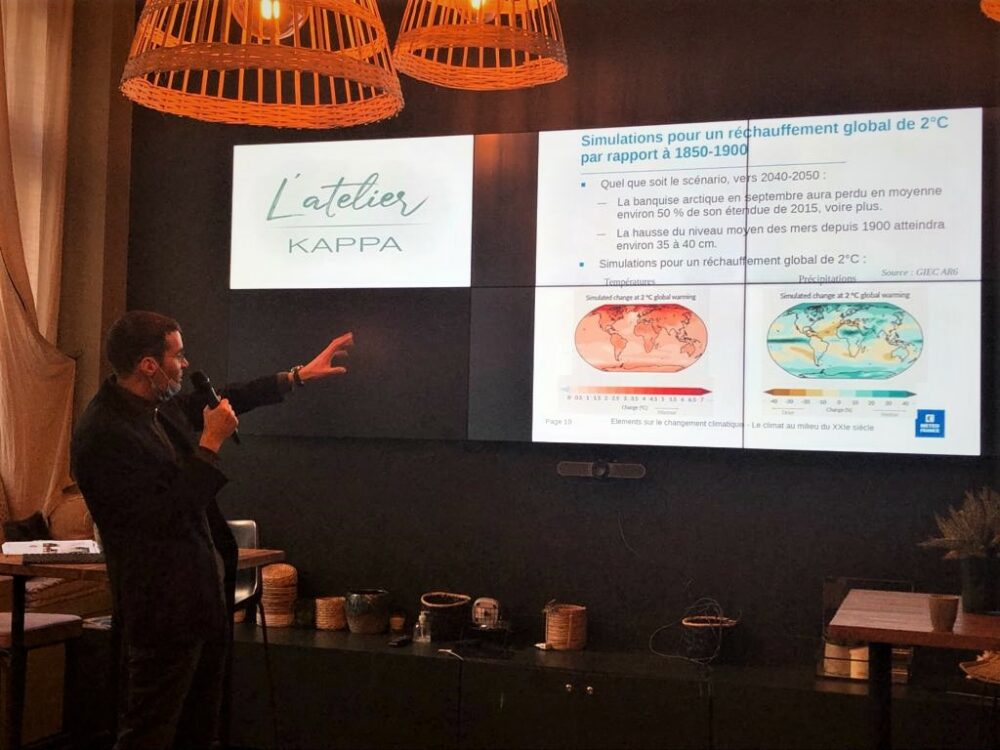
Don’t underestimate the impacts or the speed of climate change, warned Frédéric Long. “People often confuse weather and climate. The ‘+1°C’ we already have is huge for the climate. We haven’t quite reached the level of the peak during the last interglacial period – except that we took 20,000 years to reach the latter, while for this one it’s taken around a century.”
Here and now
“The railway system is relatively immune to bad weather,” said Roger Guibert, managing director of SNCF in 1970. “Really?” retorted Vivian Dépoues, research associate for adaptation to climate change at the Institute for Climate Economics (I4CE), in 2021.

Following the heavy rainfall in Germany in July 2021, DB Networks, the national rail infrastructure manager, reported over 600km of rail track and 80 stations had suffered damage, as well as ground equipment and signalling. According to the federal transport minister, repair works would cost upwards of two billion euros, of which 1.3 billion to rebuild the tracks and around 500 million for the stations. These works could well last until 2025.
“We’re talking about both deep-rooted changes and extreme events that are impacting transport systems,” warned Mr Dépoues. Repeated incidences of heatwaves, for instance, have a serious impact on minutes lost by trains in France: 75% of minutes lost over nine days in a row, in July 2019, were directly caused by the heatwave at that time.
Data shared by Frédéric Long from Météo France certainly confirms this observation: between 1947 and 2021, 43 heatwave incidents were recorded in France, of which 18 during the decade 2011 to 2020.
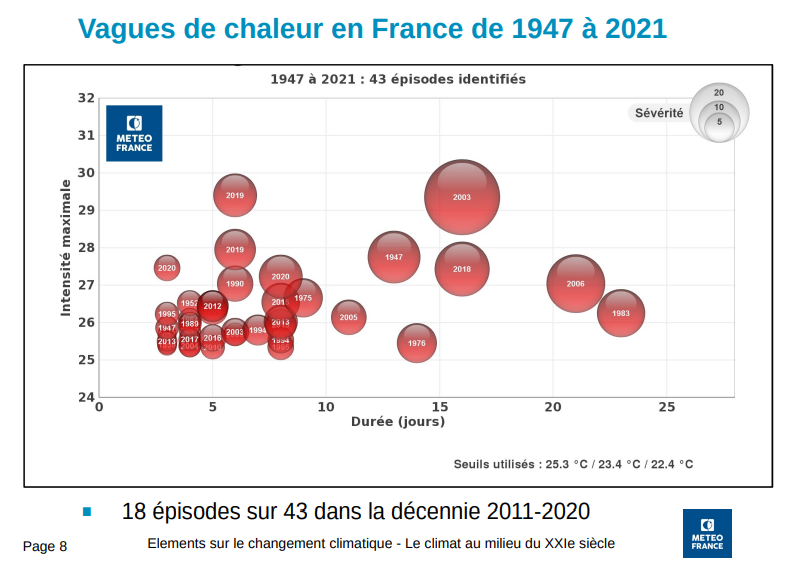
Climate and natural variations have various impacts on transport infrastructure, pointed out Marie Colin, technical referent for infrastructure resilience and adaptation to climate change at Cerema (French Centre for Studies and Expertise on Risks, the Environment, Mobility and Urban Planning). With extreme heat, for instance, comes the risk of deformation of road surface layers, or of tracks buckling and electric cabling melting on the railways. For all networks, heavy rainfall may lead to drainage problems or deterioration.
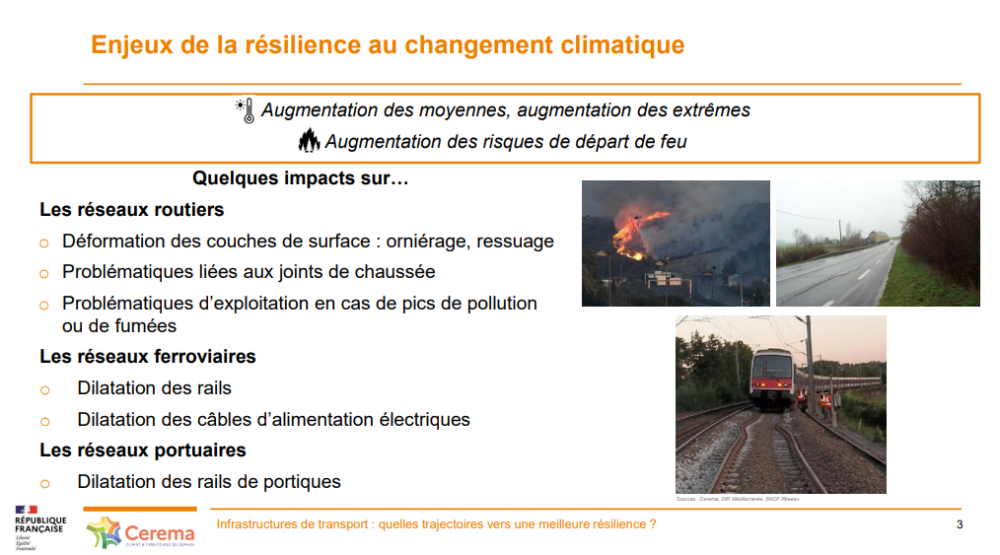
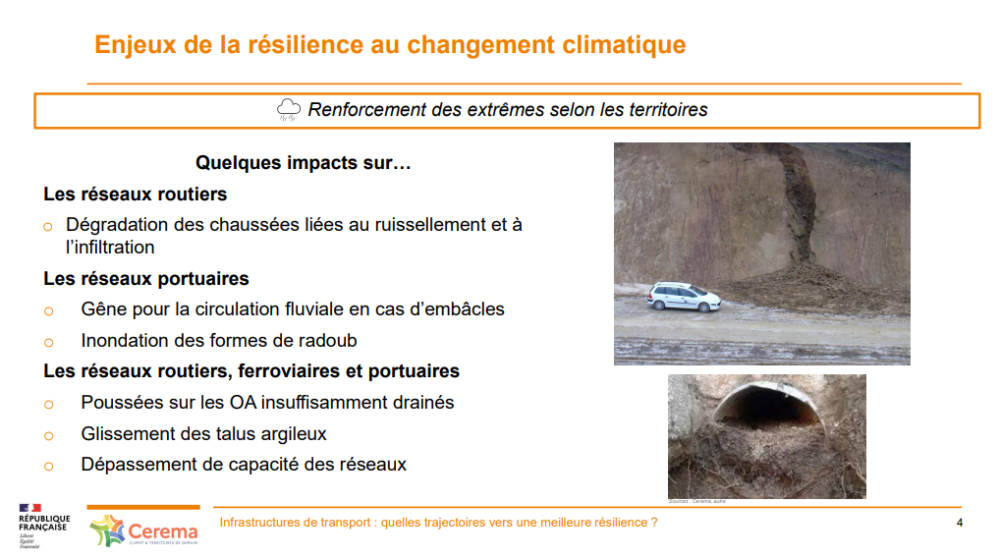
Furthermore, in such extreme conditions and given the difficulty of assessing the risk of one-off events, insurance firms may well refuse to provide cover for quite a few risks in the future.
Which measures to adopt ?
In this alarming context, what are the best approaches to adopt? According to Vivian Dépoues, “adaptation must be systematically taken into account in structuring key decisions.” Like, for instance, the decision by the European Commission in July 2021 on adapting infrastructure projects to climate change for the period 2021-2027, based on the report Climate change adaptation of major infrastructure projects (2018). Or the US infrastructure bill, adopted by the Senate in November 2021: out of an investment package worth a total of 1,2 trillion dollars, 47 billion dollars are earmarked for climate resilience measures to help communities resist storms, droughts, flooding, heatwaves, and rising sea levels. “This is an example of supplementary action that differs from systematically taking adaptation into account in structuring key decisions, which first and foremost have other objectives in mind, since it concerns ad-hoc investments whose primary aim is adaptation,” commented Mr Dépoues.
France isn’t isn’t exactly blazing a trail in the field: companies seem to lack maturity on the issue and so far the French National Adaptation Plan for Climate Change 2018-2022 (PNACC-2) remains barely operational and exerts no influence on key investment decisions. Even more recently, the France Relance plan, released by the government in September 2020, makes no mention of adapting infrastructure to climate change.
‘The technical reference framework will be reviewed by the competent services and adapted as much as necessary, prioritising the transport infrastructure and equipment sectors (reliability and climate comfort). The Ministry of Ecology and Solidarity (MTES) will support projects focused on adapting transport networks and infrastructure.’
In any case, in this race for resilience, government policy alone won’t suffice. “It also involves ramping up the organisations in question – which calls for a fair amount of changes within these organisations, possibly including new skills and a un certain portage,” argued Mr Dépoues.
Since 2015, SNCF has started taking adaptation to climate change into account through numerous projects (theses, studies, audits, …) launched within different Group entities – “based on a systemic approach, including externally,” explained Claire Rousselet, ‘Climat Carbone’ expert at SNCF. Today, the Group is finalising its adaptation to climate change strategy, presented to its executives at the end of November 2021.
Steps taken by the French rail operator include building links between all its business units, raising awareness among staff, and drawing up action plans for the long term in order to spread the costs. To make this happen, “we are open to and welcome benchmarking, cooperation, and partnerships,” declared Ms Rousselet.

It is with a view to supporting transport infrastructure managers that have adopted such an approach that Cerema has developed its services. In particular, a 10-step method designed to diagnose vulnerability to climate variability, both now and in the future, followed by the drawing up of an adaptation plan for resilient infrastructure.
“With climate change, we’re going to see different and possibly greater impacts on infrastructure and operations, maintenance, finances, users, and more widely on territories,” pointed out Marie Colin.
SNCF Réseau and the Port of Bordeaux are among those who have turned to Cerema on this matter.
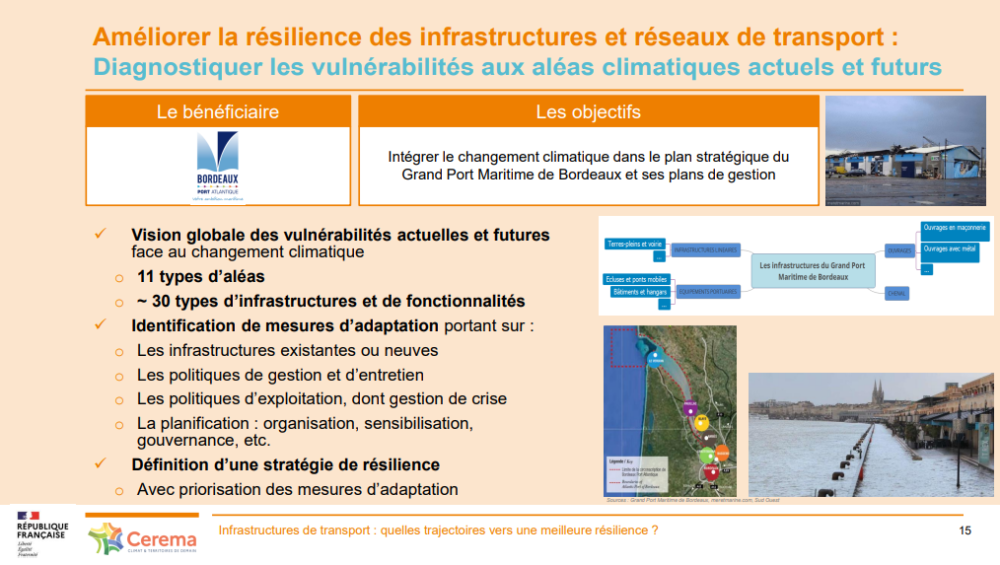
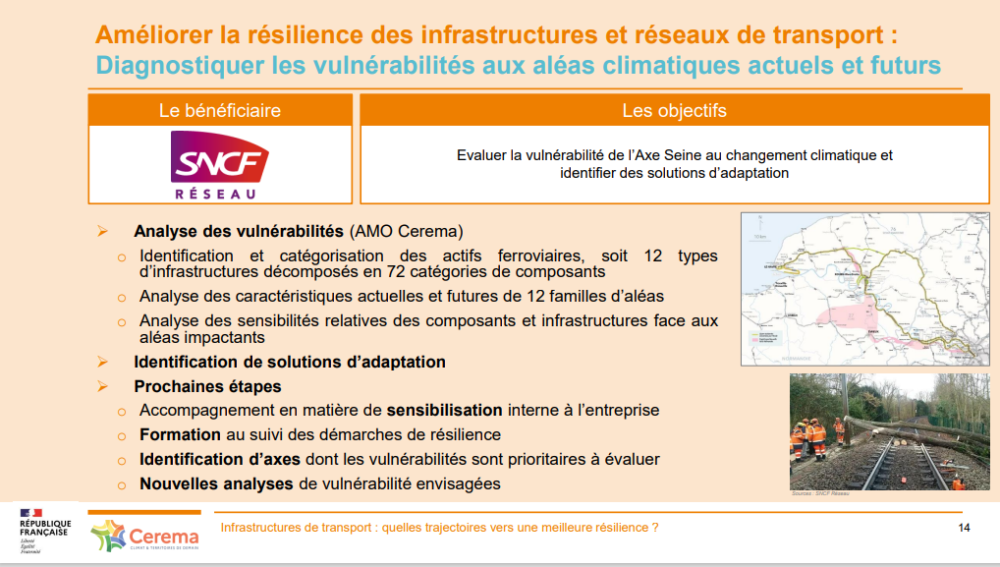
Tip of the iceberg
To adapt their infrastructure as best possible to climatic variability, managers must take a global view of the matter in hand and its related issues. Notably, they must take technical and social changes into consideration – like, for instance, the introduction of ‘coronapistes’ – the bike paths, often temporary, created in French cities during the Covid-19 pandemic in 2020 to ease crowding in public transport and encourage carbon-free mobility. If infrastructure managers ignore such changes, “they run the risk of investing quite heavily while forgetting what the future holds,” warned Ms Colin.
“We mustn’t ignore the social and economic costs of climate change,” added Mr Long, referring to the European project COACCH (CO-designing the Assessment of Climate CHange costs), an initiative that moved in this direction. With a €4.5 million grant, between December 2017 and November 2021 COACCH brought together leading experts from the science of climate change, coming from 13 European research institutes. The goal being to further knowledge of climate change impacts and policies for direct use by stakeholder communities.
In addition, Ms Colin raised the question of standards and adapting them to climate change – a subject that also forms part of the work at Cerema.
Everyone around the table
From collective and prospective approaches to bolder policies, changes and reflection within organisations, a great many directions must be taken to adapt transport infrastructure.
“Everyone needs to come to the table and take action here and now,” highlighted Mme Colin. “Measures aren’t necessarily costly in terms of money but time must be dedicated to the issue,” insisted Mr Dépoues.
Articles similaires:
Il n’y a pas d’article similaire.

